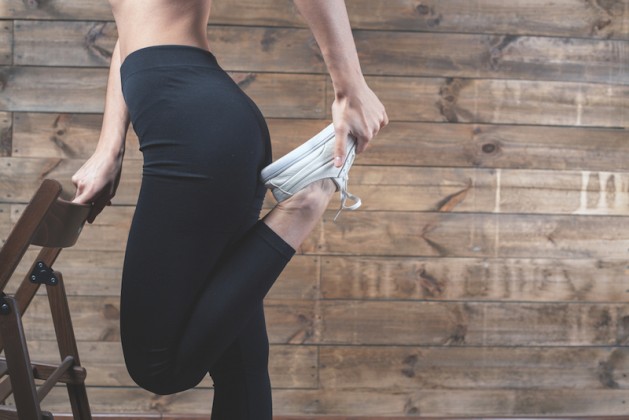
While they’re certainly tough to handle, heated workout classes might not be as beneficial as you first thought. Sure, classics like hot yoga are here to last, but do steamy exercises really make a measurable impact on health? The research is mixed.
The trend of heated workout classes began a few years back, after yoga made itself a staple in the American exercise diet. Those who practiced yoga and pilates just couldn’t get enough, so the next trend emerged. Bikram yoga. A relatively new practice, Bikram (hot) yoga was developed in India by a man named Bikram Choudhury in the ‘50s. After gaining popularity in India for a few decades, Choudhury expanded the practice worldwide, owning 1,600 studios worldwide by 2006. And when Bikram yoga made waves, Americans couldn’t get enough, so the heated classes expanded to cycling, boxing, and barre (to name a few).
But why the obsession? Participants chalk it up to the sweat factor. Of course, turning up the heat ensues your sweat levels will increase. The detoxifying nature of sweat is important, sure, but does sweating more really burn extra calories? The unfortunate answer is: not really.
According to Brian Tracy, Ph.D., an associate professor of exercise science and health at Colorado State University, “The body has to work a little harder to cool itself off when you exercise in the heat, so hot workouts may increase the metabolic load a bit, but they won’t dramatically increase the calories burned.” So, even if you sweat more than during a normal workout, you’re not necessarily burning more calories.
Some researchers believe your body doesn’t actually work harder at all in heat-intensive exercise situations. In fact, quite the opposite. Christopher Minson, Ph.D., codirector of exercise and environmental physiology at the University of Oregon, said, “Training suffers when you’re in very hot conditions all the time. You get overheated and can’t exert as much effort, so that diminishes your performance.” The decrease in exertion might even result in less calories burned, not more.
There are other dangerous elements to heated exercise classes as well. The risk of dehydration increases tremendously, along with heat exhaustion. So if you’re thinking of taking up a hot yoga class, be sure to drink a glass of water before you leave home and take sips throughout the workout.
But heated workouts aren’t all bad news. There’s strong evidence that suggests endurance athletes who exercise in hotter temperatures have an advantage in both hot and cold weather because their hearts become more efficient at pumping blood to their muscles.
And finally, hot workouts allow the body to bend more easily, which is perfect for sports that require increased flexibility.
Ready to jump in on the heated workout trend? If you’re an endurance athlete, love the detoxifying feeling of sweating it out, or simply love the extra flexibility, training in the heat might actually be to your advantage. For everyone else? It’s hit or miss. Just remember to drink plenty of water to keep hydrated—no matter how you train.
Self.com



